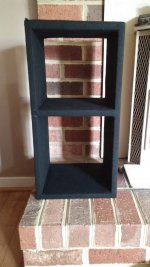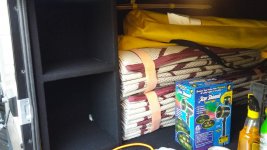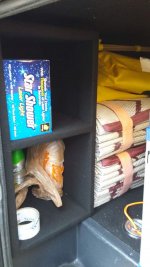2psnapod2
Texas-South Chapter Leaders-Retired
Jerrod, Bones, and anyone else doing this type of mod -- Before you drill holes into your basement ceiling and floors, how do you know what it behind the floor/ceiling? I'm pretty sure there's nothing in the floor except the plywood base so that seems pretty safe but I'm not so sure what might be in the basement ceiling, e.g., electrical lines, etc. And what type and length of screws are you using? Something like a 2.5 inch wood screw?
Jeff, take a look at the ceiling where your toilet comes out. Should be 6 inches of Styrofoam.




